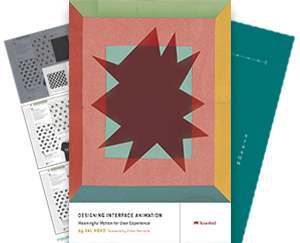Design process has always been a favourite discussion topic of mine. There’s so many great ideas, variation, and personal preference involved. No two designers or shops do it the same way, so it’s always an interesting one.
Chris’s post on cognition a little while back got me thinking about how I’ve used the rule of 3, or other mutliple comps processes in the past. It seems like these multiple comps processes don’t always have a favourable popular opinion.
Most places I have worked for in the past, have favoured a process involving multiple comps. I’ve seen this go really great sometimes, but often go really wrong. I’ve always been hesitant to give up a multiple comps process because I think there’s some definite advantages to it, but it’s really only effective when you need to have a solid plan behind it.
I think the main reasons the rule of 3 (or two or whatever) gets a bad rap are: budget, the throwaway/lost design work and the fear of frakendesigning. Chris covers points about the first two really well, so I wanted to add a little bit on frakendesigning based on my experience.
I doubt there is any way to guarantee some attempt at frankendesigning won’t happen, but there’s no reason to think multiple comps will always lead to it. There’s two main things I’ve noticed when the processes went terribly wrong and frakendesigning showed up in full force.
- Lack of clear communication to the client.
- Not having a solid plan/skipping out on the needed research and discovery.
Not explaining the process
Too many times, I’ve seen the explanation of *why* they are seeing multiple comps completely left out. The differentiated messaging or concept behind each is not communicated, or worse, wasn’t there to begin with.
If when presenting multiple looks, those details are left out, it comes across more like “oh, we have three designers so they each did a design for you because, um, well, they just did. Yay!”.
That’s not good. The client is left with nothing really to judge on besides personal preference. They think you’ve just invited them to some kind of design buffet. If they happen to be kind sensitive people, they might be worried about hurting one of the designer’s feelings. (You know how sensitive and emotional those designer types are, right?). So, they pick a little from this one, and a little from that one and think they are doing the right thing and being fair by mashing everything together.
Possibly worse than not explaining it at all is setting up the wrong expectations. When your sales guy starts off the project along the lines of “you’re such a super awesome client we’re going to give you FIVE design options to choose from even though we hardly know any of the details yet!!!!!” That is not a good start either. (Maybe this one comes too much from personal past experience. I’m listing it anyways in case anyone needs to commiserate.)
Not having a plan
This is very much tied to the first point, but I’ve seen it skipped so many times. If after the inital prep and research — much of which is done with the client, of course — your design team only has two concepts that are compelling enough to explore, that’s fine. Just do two. The most important part is having come up with those solid concepts to explore. Which is usually not something you can make a call on until you know what the project entails.
Some kind of conclusion
Looking back at my list — yes, the one of all two reasons –I noticed that they can be summariezed by rushing the process. So add, frakendesigning to the list of potential risks when you jump right into a “hurry up!” mindset to getting a project done.
